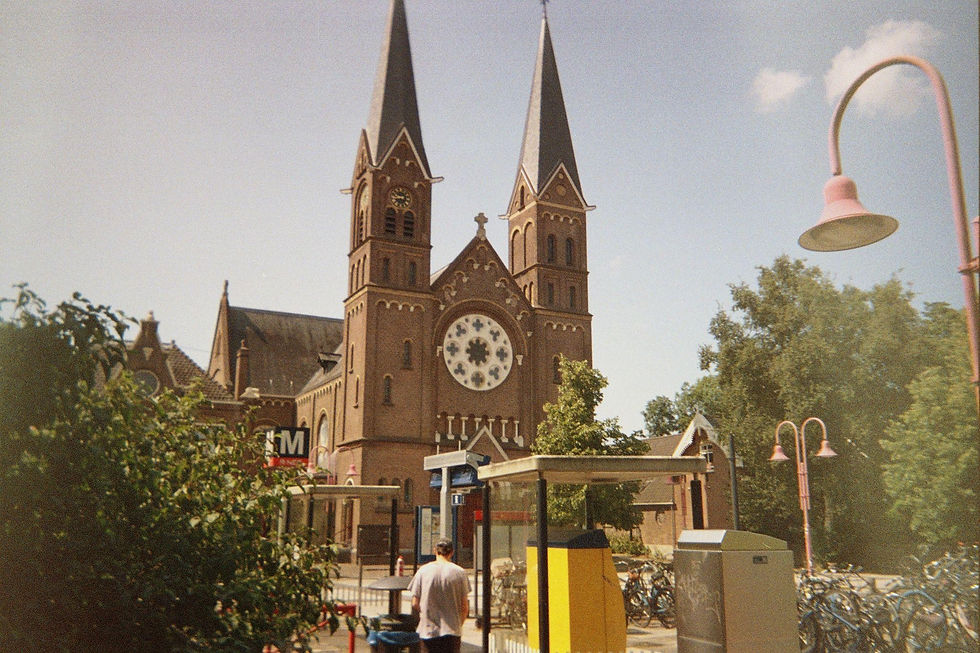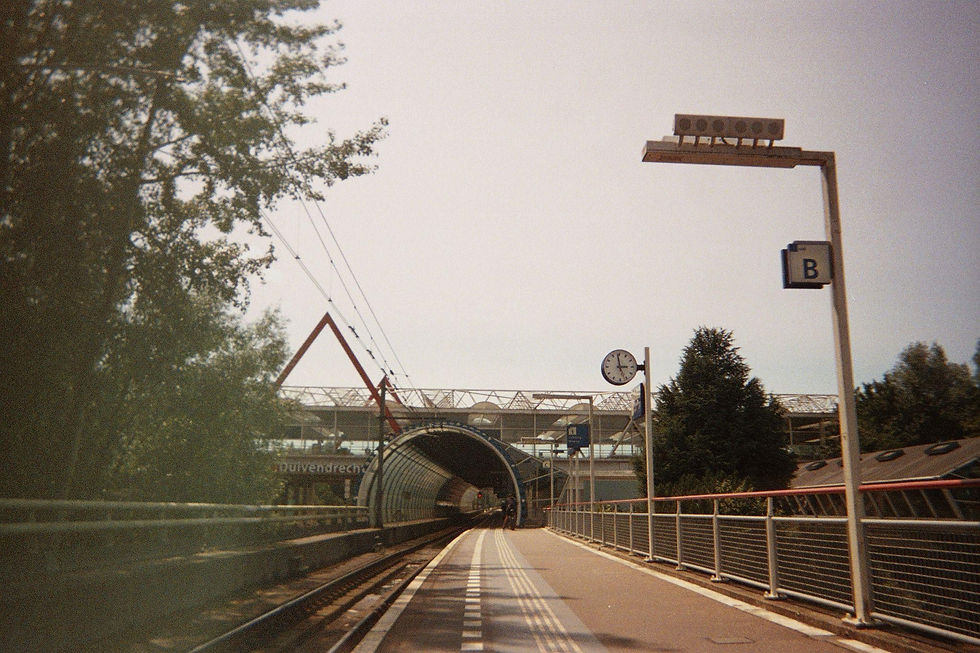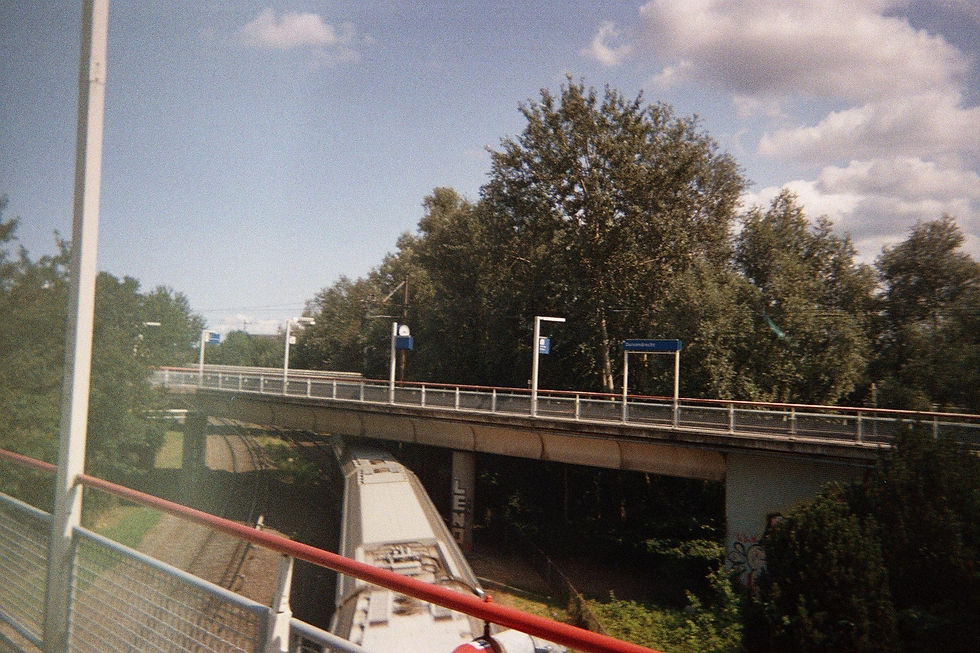Train Cross-Roads
- Alex Dieker
- Aug 5
- 3 min read
Text & Images: Alex Dieker
My day starts slowly, and then all at once. I brush aside the dream and ready myself for a change of state. We walk over the grey stone sidewalk past the frozen morning dew and standoffish, large geese. I struggle to engage in an early morning chat. Past the school, we round the corner—Duivendrecht greets us with its large white letters framed by a red triangle, a late modernist sign for a sci-fi-like station appearing to be stuck in the Cold War. Are we stuck here, too?

The platforms run so long you’d think they stretch to the following station. Or to the rest of Europe. Like its architecture, the station’s geography appears stuck, not in the past but in a swampy field. Tall, full trees enclose the steel-framed concrete and glass structure. Beyond them lie vast green fields, one of which has become colonised by a white-ish concrete slab serving as the foundation for this parking lot or that building project. Of course, the reader should not mind the details, but instead feel the sun’s caress from these mid-July photos.

The not-oft-trampled rear exit leads us to the village of Duivendrecht, complete with a church and historical map, but nobody appears to be living here. It’s as if the town was constructed after the station, in its name, and very few chose to move in amidst the scramble to transfer from one train to another.

This space is for transport; one must teleport oneself to a remote locale, to this behemoth of a crossroads, to further pass to another Dutch city. I wonder: What is that final destination?

In the pentagonal entrance, we approach the gates to check in. Up the escalator, round the corner. Will it be an oat milk cappuccino or a sprint to the train doors, flashing red like a departing space shuttle? Layers of stairs and escalators, the overlap of foot-bound transit routes. How easy it is to not be seen, to inundate oneself with a podcast or, during the course of this photo shoot, a casual conversation with a friend. Topics of the day: What the heck is this building doing here? Is this the greenest station in Amsterdam? Should we grab a pint?

This is a centre of overlap, of meeting in the middle. Amsterdam sandwiches this small village and its oversized station. One can see the city and, with the turn of a head, the endless fields of ‘rural’ Holland.

It’s winter again. Small, beady-eyed crows watch us as we stand in the cold, between two worlds. In a few stops, we will be in the city centre with the cafés and coffee shops, tourists and rich locals, and buildings built with blood money. The Bijlmer sits only two stops in the other direction and hosts a more widely spread layout, a more diverse population. The station’s design echoes the massive honeycomb high-rises which define the modernist housing project of the city’s Southeast. I call it home, for now. Duivendrecht bridges a geographical and temporal gap. And in what unique fashion! An extravagantly concrete, unabashedly ugly, multi-layered station for a city of cultural tapestries.

This space feels distinctly inhumane, a product of Amsterdam’s unending spatial growth, built to facilitate the movement of thousands of daily commuters. We move from one place to another, a phase of life, the next turn of phrase, a hop, skip, and long leap into the future. As we look back at the station leaving our sight, we remember that nothing is stagnant—everything is changing. Probably for the better.







Comments